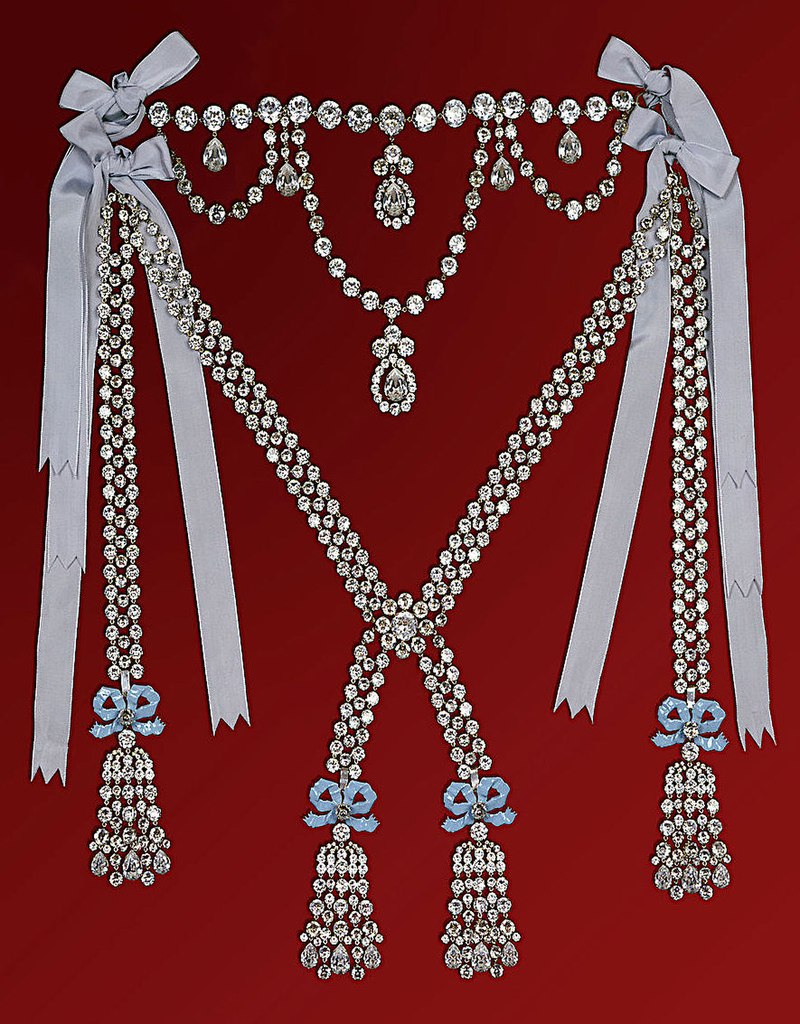by Scott Mehl © Unofficial Royalty 2020
Jeanne Bécu, Countess du Barry was the last official mistress of King Louis XV of France, from 1768 until the King died in 1774.

Jeanne Bécu, Countess du Barry – source: Wikipedia
Jeanne Bécu was born August 19, 1743, in Vaucouleurs, France, the illegitimate daughter of Anne Bécu. Her father was probably Jean Jacques Gomard, a local friar. As a child, the family moved to Paris under the care of a friend – and possible lover – of her mother. She was soon sent to the Convent of Saint-Aure for her education. After finishing her schooling, she returned home to her mother and her mother’s husband. With limited income and resources, Jeanne took several jobs to earn a living. She worked as a companion to an elderly woman, and as an assistant in a haberdashery shop, among other things.
A remarkably beautiful woman, Jeanne found that her looks were the way to provide herself with a very good living. In 1763, she met Jean-Baptiste du Barry, a casino owner who also worked as a pimp. Soon, she was living with du Barry and became his mistress. Du Barry brought Jeanne into the highest circles of society and she soon became a well-respected courtesan – entertaining numerous men from the highest levels of society as well as the French court. These included the Duke de Richelieu, one of the courtiers of King Louis XV. She would eventually catch King Louis XV’s attention in 1768 while visiting Versailles and quickly became his mistress. In order to allow her to be present at court, a marriage was arranged to du Barry’s brother Count Guillaume du Barry, on September 1, 1768.
Jeanne took rooms above those of King Louis XV, but could not be seen publicly with him as she had not yet been formally presented at court. This eventually happened on April 22, 1769, and Jeanne became the King’s official mistress (maîtresse-en-titre).
King Louis XV lavished Jeanne with gifts of jewelry and fine gowns, and rarely refused any of her requests. Her influence over Louis was very strong, and she often used it to help others. Despite the King’s devotion, Jeanne was disliked by many at court, including several who did everything possible to get rid of her. But the King would have no part of that and refused to hear any bad words about her.
During her tenure, Jeanne obtained a title for her mother and financial security for her family. It would be her financial extravagance that began to make her more unpopular. Despite receiving a very generous monthly income from the King, she was perpetually in debt. Despite that, Jeanne would remain the King’s closest confidante and lover until his death.

By Château de Breteuil – Wikipedia, CC BY-SA 4.0, https://commons.wikimedia.org/w/index.php?curid=76856531
In 1772, King Louis XV commissioned a diamond necklace to be made for Madame du Barry, requesting that it be of greater splendor than anything else made. Sadly, he died before the necklace was completed or paid for, and Jeanne never received it. This necklace was the central element of the Diamond Necklace Affair, in which Queen Marie Antoinette was accused of bribing a cardinal to purchase the necklace for herself. These accusations were contributing factors to the beginning of the French Revolution.
Following King Louis XV’s death in 1774, Jeanne was banished from court and sent to the Abbey du Pont-aux-Dames. After a year, she was permitted to leave the abbey but banned from coming within 10 miles of Versailles. She eventually purchased property in Louveciennes where she moved in 1778.
During her time as the King Louis V’s mistress, Jeanne had been gifted with a slave Zamor who remained in her household. Zamor later joined the Jacobin club, and upon discovering hearing this, Jeanne dismissed him. In retaliation, Zamor gave testimony implying that Jeanne had assisted numerous aristocrats who had fled the French Revolution. Due to this testimony, Jeanne was arrested and charged with treason. A swift trial took place and she was found guilty and sentenced to death by guillotine.
Madame du Barry was beheaded on December 8, 1793 on the Place de la Révolution (now the Place de la Concorde). Her remains were interred in the Madeleine Cemetery in Paris.
This article is the intellectual property of Unofficial Royalty and is NOT TO BE COPIED, EDITED, OR POSTED IN ANY FORM ON ANOTHER WEBSITE under any circumstances. It is permissible to use a link that directs to Unofficial Royalty.
